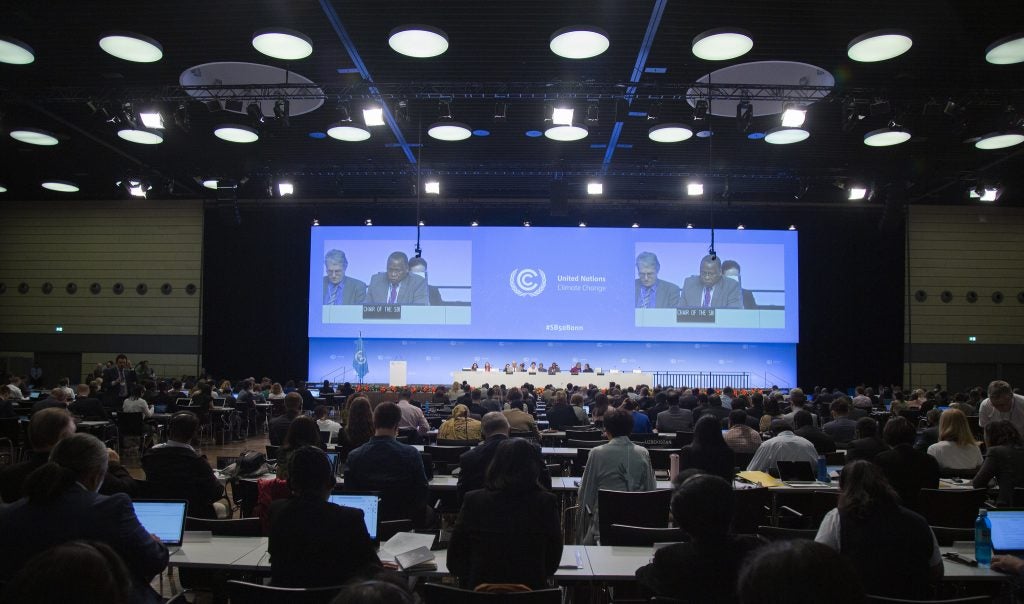This post was co-authored by Natalie Hurd, Western states climate policy intern at EDF.
Washington state is on the cusp of finalizing the rules to launch its ambitious new climate policy. This comes at an important moment of opportunity for states to lean into their climate commitments and increase their ambition. The passage of the Inflation Reduction Act will drive an unprecedented level of investment in fighting climate change and building a clean energy future, making it even easier for states like Washington to meet their climate goals. By enacting ambitious cap-and-invest legislation last year, Washington has taken an important step forward — but now it’s up to regulators to deliver the strongest possible cap-and-invest program.
The Climate Commitment Act (CCA) pairs carbon emission reductions with new tools to tackle local air quality disparities — all in the same policy framework. One of the valuable tools included in the cap-and-invest legislation is an emissions containment reserve (ECR) — a mechanism that guards against long-term uncertainty by ensuring that the program will be made more ambitious if prices for the program become lower than expected. Right now, Washington’s Department of Ecology is making decisions about the details of how to implement the program, including whether or not to include a functional ECR, and EDF has made it clear that Washington should include a well-designed, effective ECR in the state’s cap-and-invest program. Regulators once again have the opportunity to lead the way on the West Coast by including a functioning ECR in Washington’s program design.
What is an emissions containment reserve?
An ECR is a design feature for cap-and-invest programs that was first implemented by the Regional Greenhouse Gas Initiative (RGGI), a multi-state climate program on the East Coast. The primary role of an ECR is to ensure that, when demand for emissions allowances decreases, the overall supply of allowances is reduced. By reducing the supply, the ECR reduces the overall amount of climate pollution allowed under the program. In other words, allowances are reserved from the market and unable to be purchased, to make sure that the overall allowance budget is adjusted so that emissions are further contained. The amount of allowances that can be removed from the supply and placed in the ECR is relatively small ー for example, in RGGI, the size of the ECR is up to 10% of the allowance budget of participating states.

Figure 1: Overview of an ECR (Adapted from Resources for the Future)
An ECR is activated when the allowance price hits a “trigger price”, which is a set price that would reflect lower-than-expected demand for allowances. In an auction, if demand for allowances is relatively low, the price of allowances at auction will decrease. If the price of allowances decreases enough to reach the ECR’s trigger price, then a predetermined number of allowances will be removed from the overall allowance supply available at the auction. By reducing the supply of allowances when the trigger price is reached, an ECR translates lower demand and lower prices into greater climate ambition.
One reason why demand for emissions allowances and allowance prices might drop, thus requiring the intervention of an ECR, is if regulated entities are able to cut emissions more quickly than expected.. For example, if a policy like a Clean Fuels Standard reduced emissions more swiftly than anticipated, then the entities impacted by that policy would have lower emissions and therefore require fewer emissions allowances than expected. An ECR helps create a supply for emissions allowances that is responsive to how demand for emissions allowances changes over time.
What does Washington’s program currently do?
Despite the added stability and climate ambition that an ECR would bring to Washington’s cap-and-invest program, as imagined in the Climate Commitment Act, the current proposed design for Washington’s program is missing a critical ingredient: an ECR trigger price. Without a trigger price, there is no way for the ECR to be activated, meaning that Washington’s proposed program does not include a functional ECR.
Why should Washington include a functional ECR in their program?
Economic modeling has shown that including an ECR in an emissions market improves performance by making the market more efficient and securing additional emissions reductions. On top of these benefits, an ECR would help ensure that a program like Washington’s will keep running smoothly long-term. For one, the inclusion of a functional ECR can reduce price volatility in the long run, which decreases uncertainty for market participants. Stable market expectations are important to the durability of the program. Cap-and-invest in the state is more likely to be successful going forward if market participants can better anticipate market behavior year-to-year and plan accordingly. In addition, an ECR provides a predictable, rule-based approach for supply adjustments, helping to avoid the need for other less predictable adjustments to supply by the Department of Ecology to keep Washington on track to meet its climate goals.
Finally, an ECR can increase the environmental ambition of the program by reducing the overall supply of allowances if demand for allowances falls, thereby reducing the total climate pollution that can be emitted by regulated entities. This is critical because Washington’s cap-and-invest program serves as a backstop, working alongside a suite of programs and investments that will help drive emissions reductions. As these programs and investments interact, it’s essential that the cap-and-invest program’s overall limit on emissions remains ambitious enough to incentivize continued efforts to address climate change, and an ECR can help do this by reducing the supply of allowances when demand for allowances is low.
Implications for linking with other carbon markets
In addition to enhanced environmental integrity and economic stability, a functional ECR with a trigger price may be an important factor in potential future program linkage between Washington and other carbon markets. Program linkage — or connecting carbon pricing systems across borders — can facilitate quicker reductions in emissions regionally. By establishing an ECR, Washington would set an important precedent for other states, as well as provide a strong example of climate policy. The ECR program design has already spread from its initial inception in RGGI, and Washington now has an opportunity to be a leader for states on the West Coast.
Market-based mechanisms to reduce climate emissions are not the only policies that need to be implemented to address the climate crisis, but they are a critical part of a suite of climate solutions, including sectoral strategies to deliver near-term reductions in climate pollution. In addition to maintaining the strength of its cap-and-invest system, it’s crucial that policymakers in Washington and elsewhere work meaningfully with communities to ensure that these policies are designed and rolled out in an equitable and just way, explicitly addressing the disproportionate burden of pollution that is primarily borne by low-income communities and communities of color. While cap-and-invest programs are only part of the solution, making them as strong and as stable as possible — such as with the implementation of an effective ECR with a trigger price — will help facilitate more ambitious and broad climate action for decades to come.
During the comment period for Ecology’s latest CCA rulemaking, EDF made it clear that Ecology should include a functional ECR with a trigger price in the final rules. Including a trigger price would help the program’s ECR function properly while driving greater reductions in climate pollution when prices are low. By building a strong ECR into its cap-and-invest program, Washington can continue to lead the way with effective, ambitious climate action that’s a model for other carbon markets.












